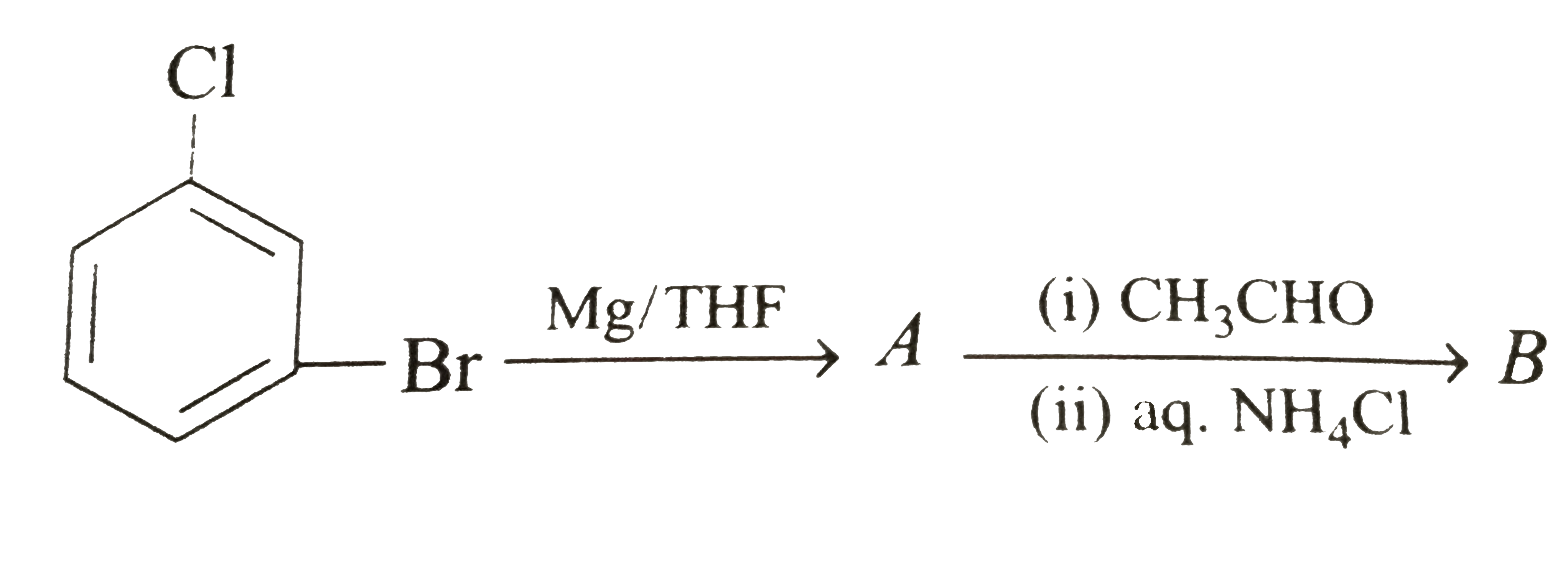In the following reaction
γ - Hydroxy carboxylic acid (i)DIBALH−−−−−−−→(ii)+
A is
γ - lactone
lactice
a hemicaetal
α,β - unsaturated acid
The correct Answer is:C
Topper's Solved these Questions
- CARBOXYLIC ACIDS AND ITS DERIVATIVESBook:FIITJEEChapter:CARBOXYLIC ACIDS AND ITS DERIVATIVESExercise:ASSIGNMENT PROBLEMS OBJECTIVE (LEVEL - II)
Explore 16 Videos
- CARBOXYLIC ACIDS AND ITS DERIVATIVESBook:FIITJEEChapter:CARBOXYLIC ACIDS AND ITS DERIVATIVESExercise:ASSIGNMENT PROBLEMS OBJECTIVE ( REASONING TYPE QUESTIONS )
Explore 5 Videos
- CARBOXYLIC ACIDS AND ITS DERIVATIVESBook:FIITJEEChapter:CARBOXYLIC ACIDS AND ITS DERIVATIVESExercise:ASSIGNMENT PROBLEMS SUBJECTIVE (FILL IN THE BLANKS )
Explore 2 Videos
- CARBOHYDRATES, AMINO ACIDS, POLYMERS AND PRACTICAL ORGANIC CHEMISTRYBook:FIITJEEChapter:CARBOHYDRATES, AMINO ACIDS, POLYMERS AND PRACTICAL ORGANIC CHEMISTRYExercise:EXERCISE
Explore 4 Videos
- CHEMICAL ENERGETICS Book:FIITJEEChapter:CHEMICAL ENERGETICS Exercise:NUMERICAL BASED QUESTIONS
Explore 2 Videos
Similar Questions
Knowledge Check
Which one of the following reactions will not yield a carboxylic acid ?
ARMgX+CO2→BPhOH+CHCl3+NaOH→CPhCN+H3O→DPhOH+NaOH+CO2→Which of the following reactions can give carboxylic acid?
AC6H5OH+NaOH+CO2→BC6H5OH+NaOH+CO2→CC6H5OH+CCl4+NaOH→DC6H5OH+CHCl3+NaOH→In the following reaction the product E is
CHO∣CHO(i)NaOH−−−−−→(ii)H+EACH2OH∣CHOBCHO∣CO2HCCH2OH∣CO2HDCO2H∣CO2H
In the following sequence of reactions a compound A, (molecular formula C6H12O2) with a straight chain structure gives a C4 carboxylic acid. A is :
ALiAlH4−−−→H3O+BOxidation−−−−−→C4− carboxylic acid
View SolutionIn the following sequence of reactions a compound A, (molecular formula C6H12O2) with a straight chain structure gives a C4 carboxylic acid. A is :
ALiAlH4−−−→H3O+BOxidation−−−−−→C4− carboxylic acid
View SolutionFinal product of following reaction is
CO2+(CH3)3C−MgBr(i)dry ether−−−−−−−→(ii)H3O+ABr2−−→Red PB
View SolutionEnd products of the following sequence of reaction is

(i)NaOI,Δ−−−−−−−→(ii)H+,ΔA+B , A& B are
View SolutionWhat are A and B in the following reaction ?
 overset(Mg//THF)toA underset((ii) aq.NH_(4)Cl)overset((i) CH_(3)CHO)toB
overset(Mg//THF)toA underset((ii) aq.NH_(4)Cl)overset((i) CH_(3)CHO)toB
View Solution
